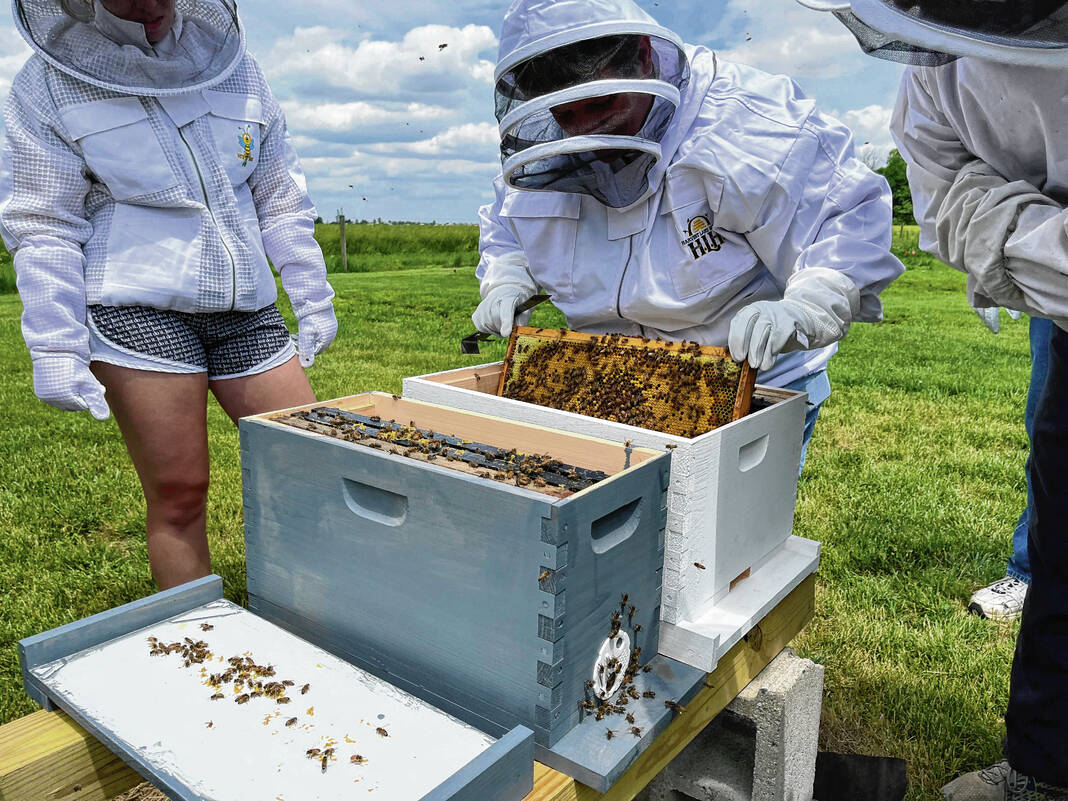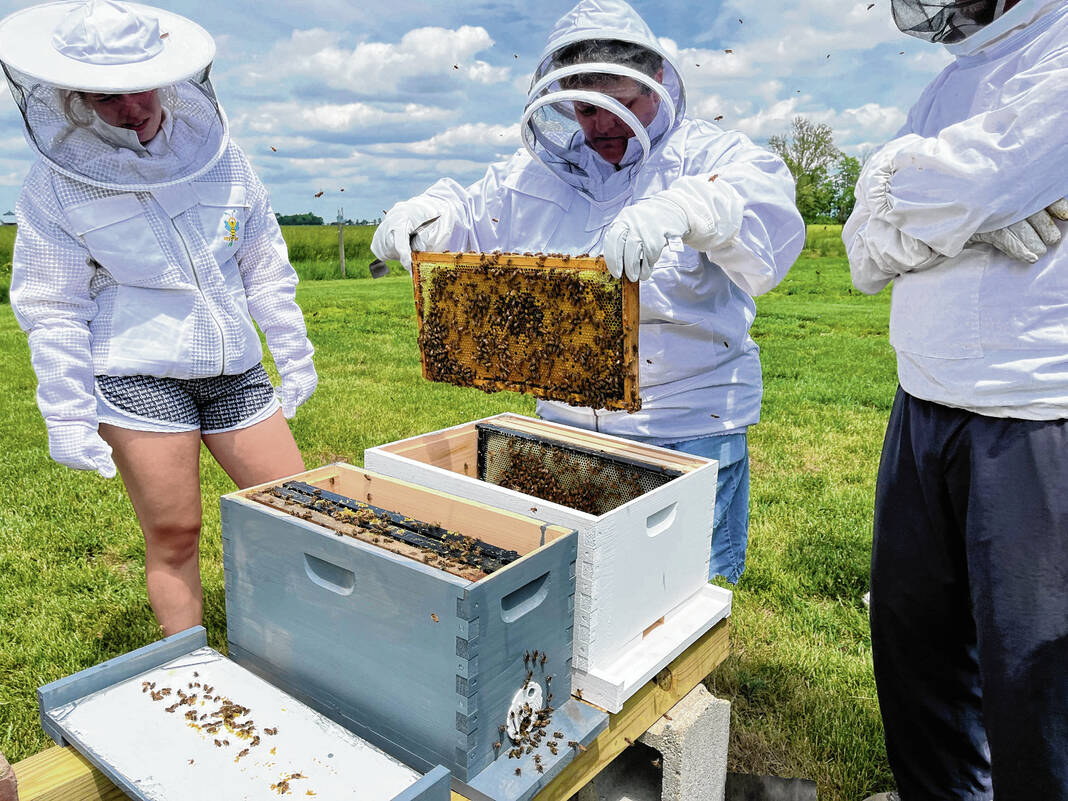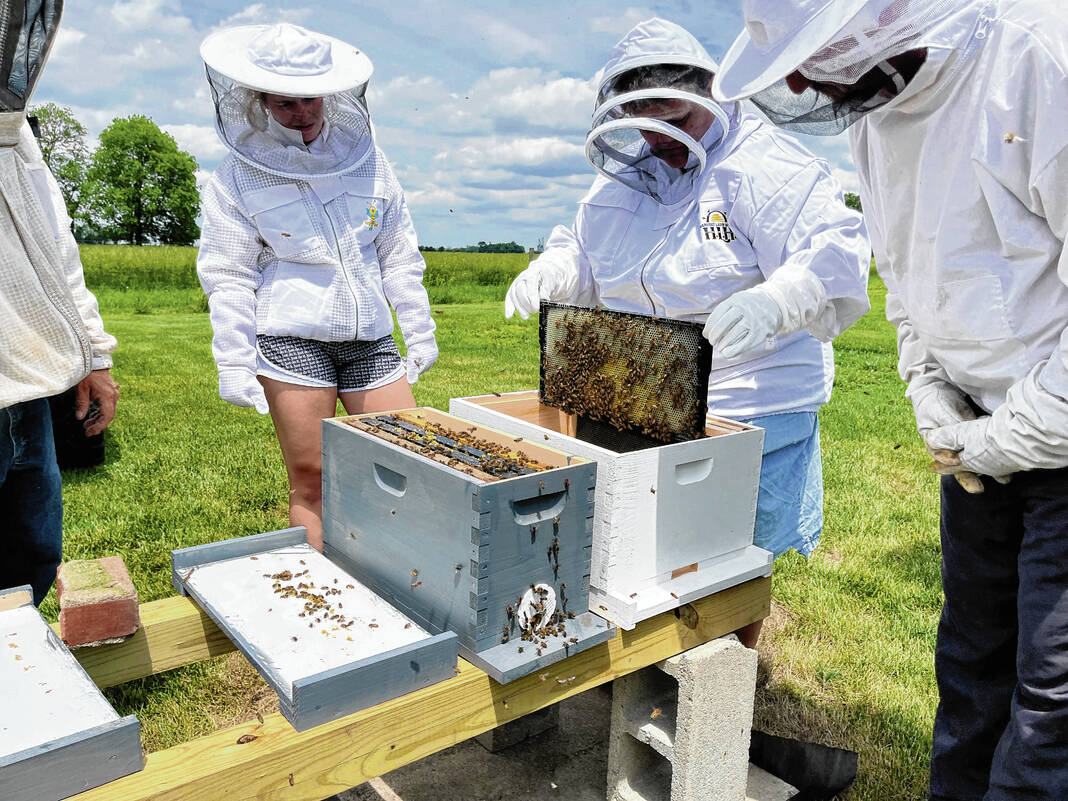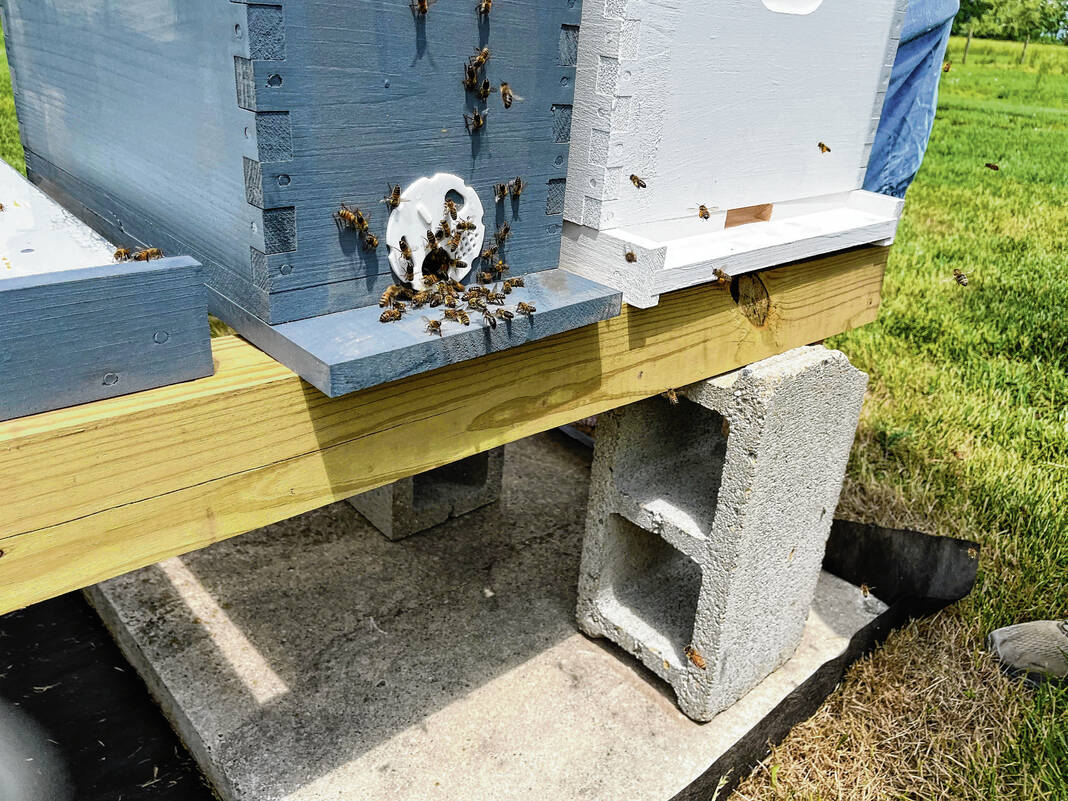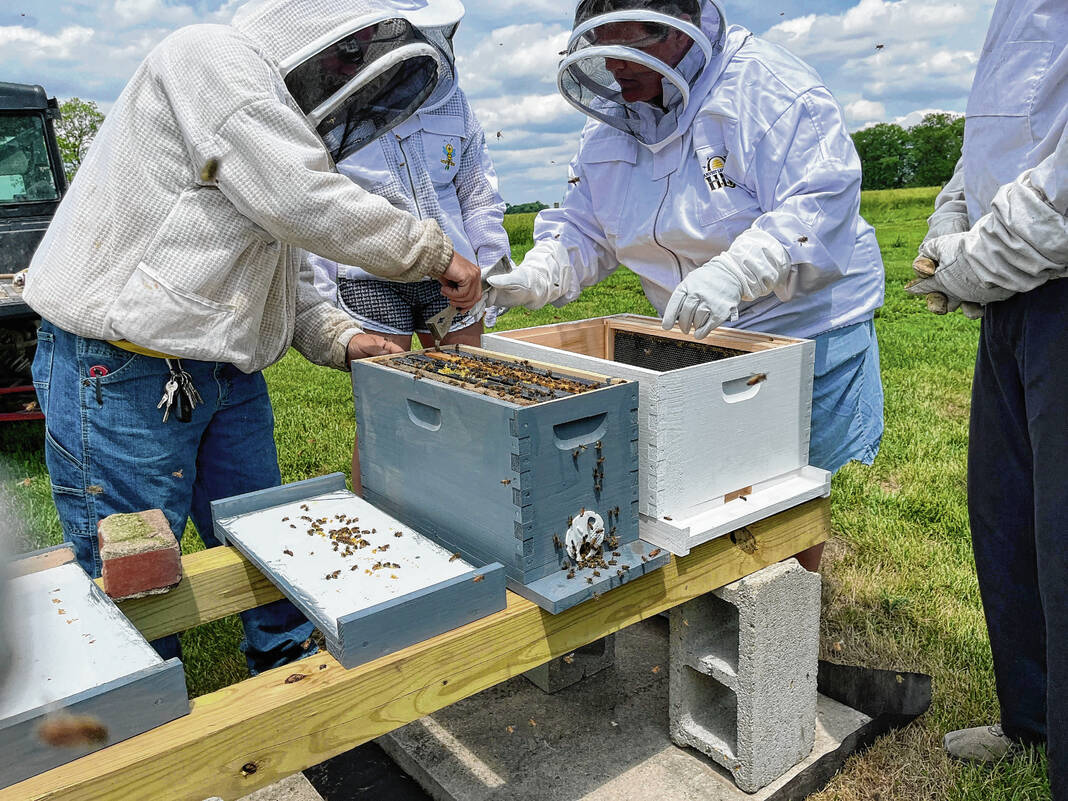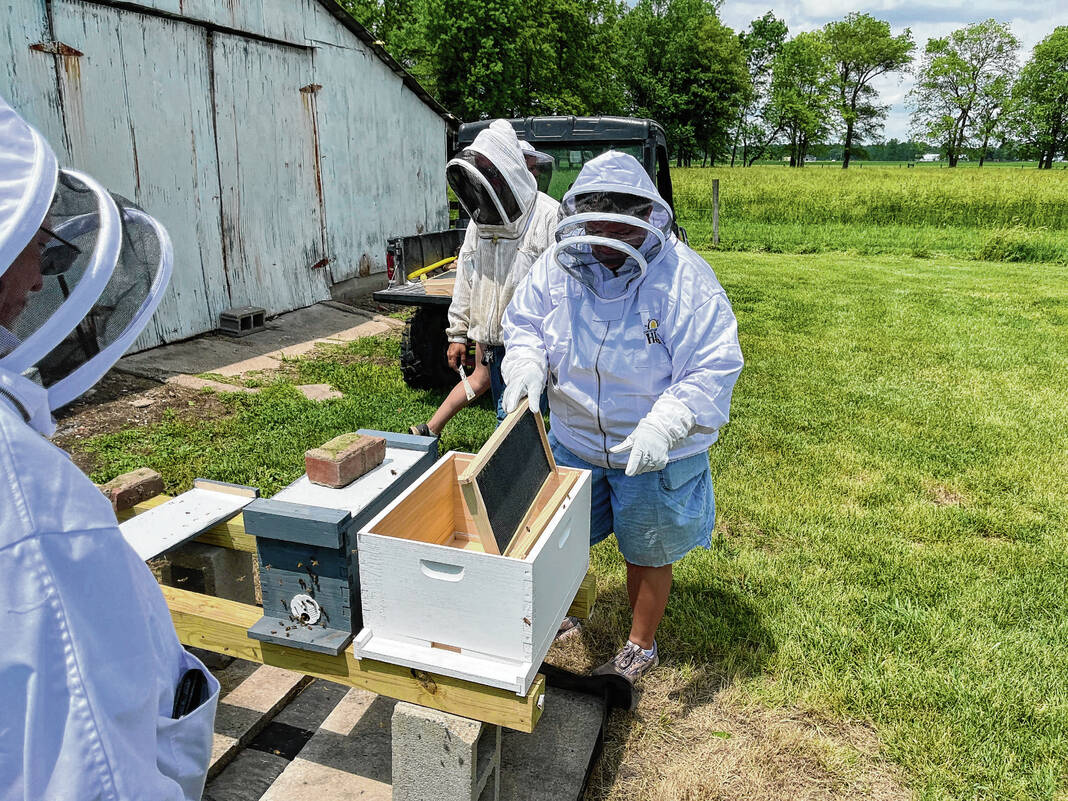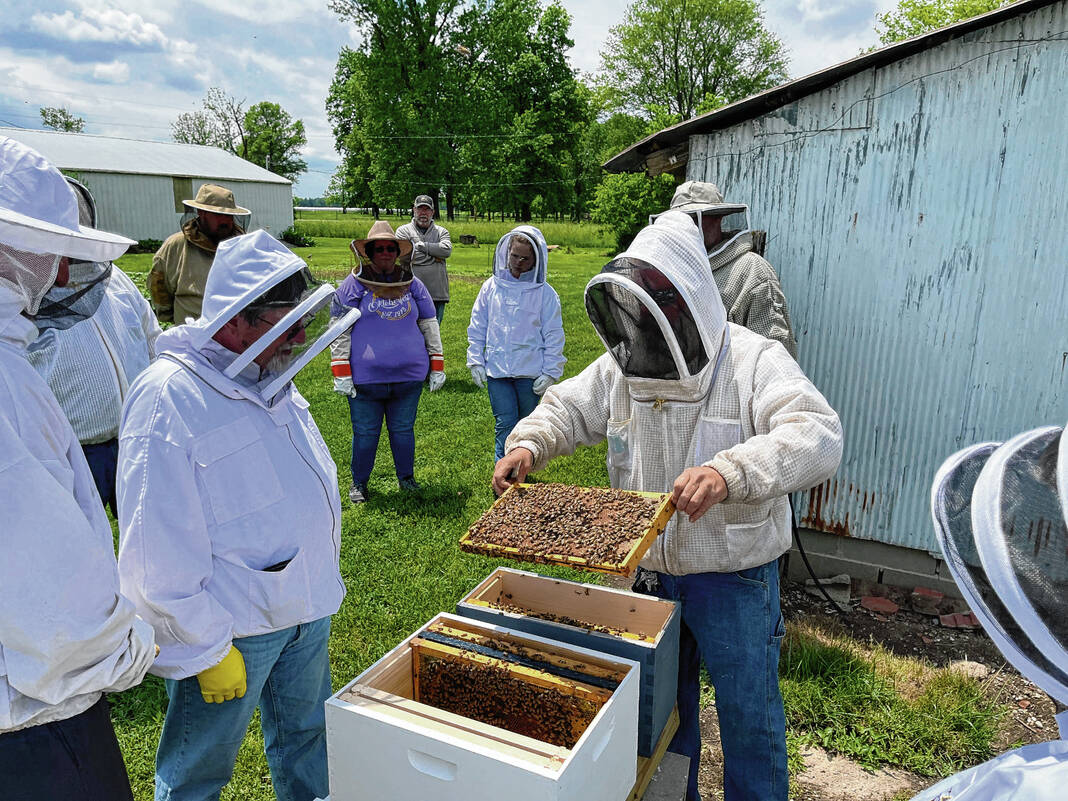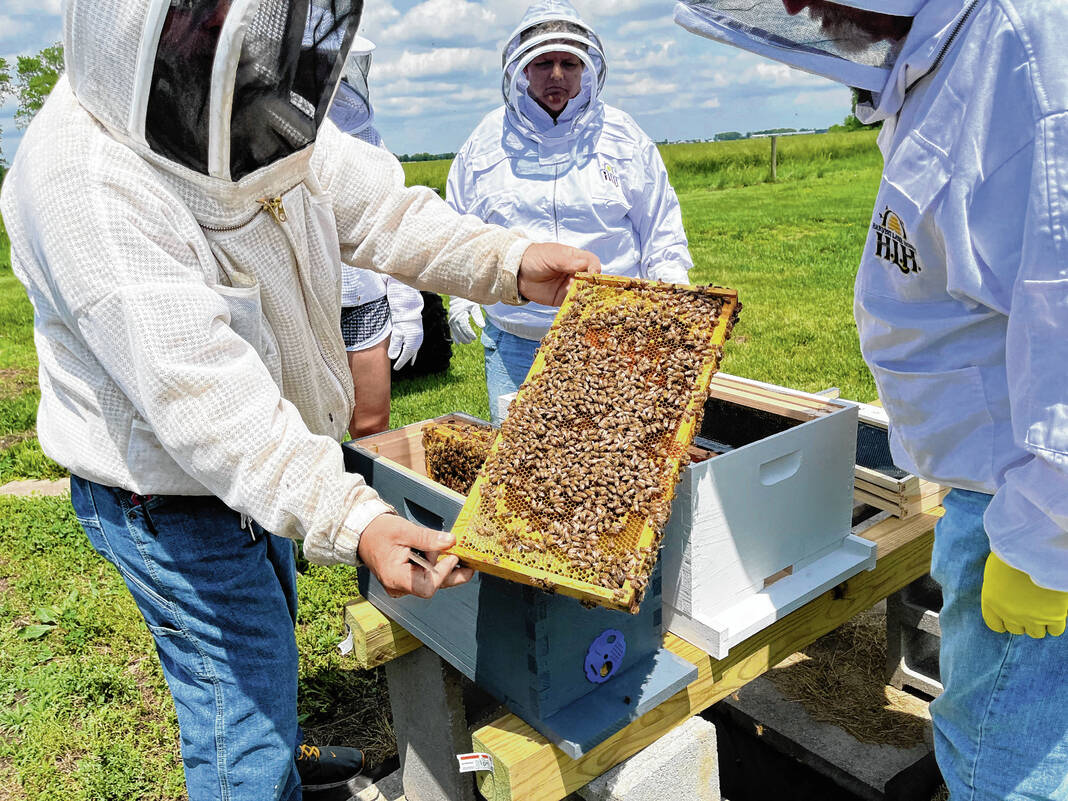A Seymour woman trying to grow her produce business recently turned to a small flying insect for extra help.
“I have wanted to have bees, and now that I have a bigger garden wanting to do more with produce, bees are just another thing to learn with help with pollination,” Megan Ritz said. “They’re amazing little creatures that God gave us, so we might as well use them to our advantage.”
On Sunday, Ritz joined about a dozen beekeepers ranging from the novice to those with experience for a demonstration offered by a couple of the founding members of the recently formed Jackson County Beekeepers of Indiana.
The event was held on property owned by Ritz’s parents, Casey and Melanie Ritz, southwest of Cortland.
Melanie Ritz also was on hand for the demonstration.
“We’ve kind of got the produce stuff going on around here, and we’re going to have a greenhouse,” she said. “She (Megan) has been wanting some bees for the greenhouse, and we’re wanting to learn something about them (the honey bees).”
One of the first steps for the Ritzes was purchasing a starter hive, also known as a nuc hive, and then transferring the honey bees to a permanent hive.
That was the purpose of Sunday’s event, said Steve Rumph with Honeytown Apiary.
Rumph along with Greg Waskom with Waskom Bees conducted Sunday’s demonstration. They are two of the founding members of the club along with Brian Hessong from Horselick Creek Apiary and Bryan Hendrix.
The group got together earlier this year to see if they could help others who had been getting into beekeeping and have been getting lost along the way, he said.
The ultimate goal of beekeeping is to produce honey and to provide pollination, Rumph said.
During the demonstration, Waskom and Rumph showed the Ritzes and others how to transfer bees from a starter hive to a permanent hive.
The process is one of the first steps in the beekeeping, Rumph said. Starter kits can be purchased from other beekeepers. Swarms of bees also can be captured with the right equipment and knowledge, but that’s another lesson.
Rumph has been involved in beekeeping for the past five years.
“I bought my original bees off of Greg (Waskom),” he said.
The process of beekeeping takes some knowledge, Rumph said.
“But with good mentors, anybody can do this,” he said.
Rumph said he has found there’s more interest in beekeeping than he had expected.
“We have a really good turnout today,” he said. “We have a lot of people just show up. They just see them out there and want to get into bees. I’ve been mentoring a few people lately.”
He said honey bees are very plentiful, and there also are plenty of people around who practice beekeeping.
Waskom said he started with five hives about eight years ago.
At that time, he just wanted to get some honey.
“People started stopping by wanting to know if we had bees for sale,” Waskom said. “The next thing you know, the next year, we went from five hives to where we sold 84 nucs.”
Waskom said most of the people purchasing know little if anything about beekeeping.
“We started helping them out,” he said. “It’s our goal to teach people how to keep their bees alive through the winter so they don’t have to go and buy new bees the next year.”
That’s the biggest issue for people getting into beekeeping.
The secret for keeping bees alive over the winter is giving them the room they need in a good, tight box, providing plenty of food, treating them for mites and keep the pests out.
“They pretty much do the rest on their own,” Waskom said.
He said bees do two things really well.
“They multiply and they make honey,” Waskom said.
He said 38% of everything people eat is directly affected by honey bees, and more than 70% is indirectly affected by honey bees.
Waskom’s knowledge of beekeeping seems endless at times.
For instance, honey bees don’t just obtain the pollen from flowers and weeds but also from many sources, including maple and black locust trees.
“The tulip poplars are a big honey crop for them,” he said. “On average, bees will go about a 3-mile radius from where their hive is at. They take stuff people want to get rid of, like the dandelion, the asters, the clovers, things that people don’t like because they consider them weeds.”
Honey bees also don’t compete with other pollinators, such as the bumblebee, butterfly and others, because each is suited for flowers, weeds and other plants.
“You have to have them all and they coexist because they do different things,” Waskom said.
He also said while bees, like people, are temperamental and can be aggressive at times and calm at others, it often depends upon the weather, the time of year, the time of day and other factors.
On Sunday, the bees were well behaved and no one was one stung.
The U.S. Department of Agriculture and the Internal Reserve Service also classify honey bees as livestock, Waskom said.
Nathan Stout of Seymour said he went into beekeeping because it was something he wanted to try, but he is still relatively new to it.
“I got into bees last year,” he said. “So this is my second year and I’m still trying to learn, still trying to keep them alive.”
Stout, who has three small hives right now, found the club on Facebook.
He said he hasn’t been able to get any honey yet.
“Keeping the bees alive is the first goal,” he said.
Hendrix, who couldn’t attend the demonstration, said he was the only one of the four founding members of the club who hasn’t made beekeeping for honey a business.
“I have been playing with bees off and on (six times) for 30 years, but always lost them over the winter,” he said. “That’s why I started the club so I can learn. Surround yourself with like-minded people and good things can come from it.”
While he doesn’t have a name for his operation, things are starting to turn around when it comes to beekeeping, he said.
“My hive numbers are growing this year,” he said. “I have nine now with three captured swarms. Fun times.”
Hendrix said Hessong has started grafting queens.
“So we are hoping to have some local queens in Jackson County,” he said. “He also is a member of the Indiana Queen Breeders Roundtable.”


